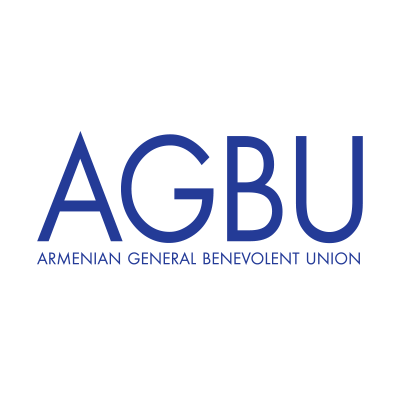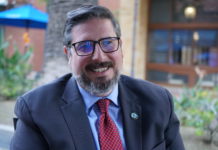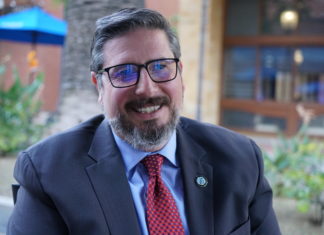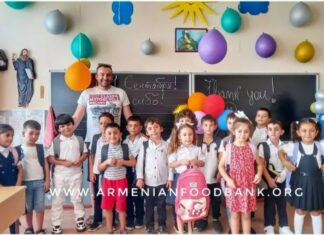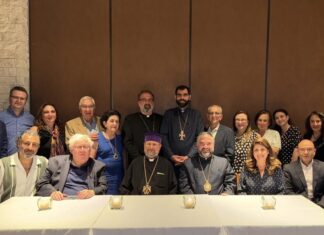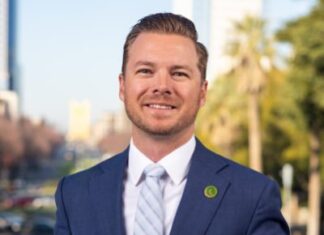NEW YORK — In a message of “engaging directly with the people, and improving outreach,” Armenia’s Ambassador to the United States Grigor Hovhannissian, who has been in this office for a year, spoke at a gathering of local Armenian-American community leaders on Wednesday, May 31, at the Diocese of the Armenian Church of America.
Attending were several representatives of religious, social, political and aid organizations including Diocesan Primate Archbishop Khajag Barsamian, pastor of the St. Illuminator’s Armenian Cathedral Rev. Mesrob Lakissian representing Prelate Archbishop Oshagan Choloyan, Armenian Evangelical Church of New York minister Rev. Haig Kherlopian. Also present were leaders of the Armenian Assembly, Fund for Armenian Relief (FAR), Armenia Fund, Tekeyan Cultural Association, the Armenian Revolutionary Federation, the Armenian General Benevolent Union and others.
The ambassador, who previously was Armenia’s consul general in California, and has worked at the United Nations Secretariat, focused his more than two-hour PowerPoint talk on Armenia’s transition to a parliamentary system, the US presidential election and its relation to Armenia and Artsakh, and the four-day Azerbaijani attack in April.
Hovhannissian detailed the bilateral relations since 2016 with the US and Armenia, including high-level talks with President Obama and senior officials, as well as participation in the NATO summit, and Armenia’s support for peacekeeping operations in Afghanistan — a larger contingent (124 soldiers) than NATO countries, as well as economic, investment, trade and energy meetings in the US and Europe.
“The US is Armenia’s most important partner and plays a decisive role in the political and economic life of Armenia,” the ambassador stated.
Though some members of Congress have visited Armenia, support for Armenia in that body has “diminished” from 160 to 94 members in the Armenian caucus currently, entailing 75 percent Democrats and 25 percent Republicans, he said. “Most are nominal supporters with no real motivation, and most are unaware of the Armenian issues. They need to be educated. There are barely 10 who know the Armenian issues and community.”
